Winold Reiss’ Stairway
The New-York Historical Society revives the memory of one of NYC’s premier architects of restaurants just as his last surviving design work may be lost
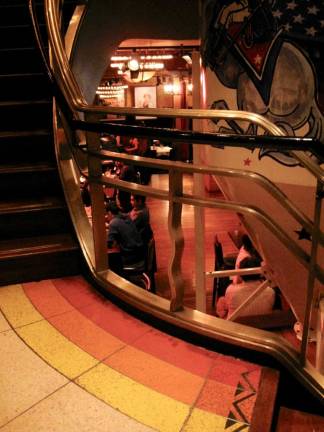
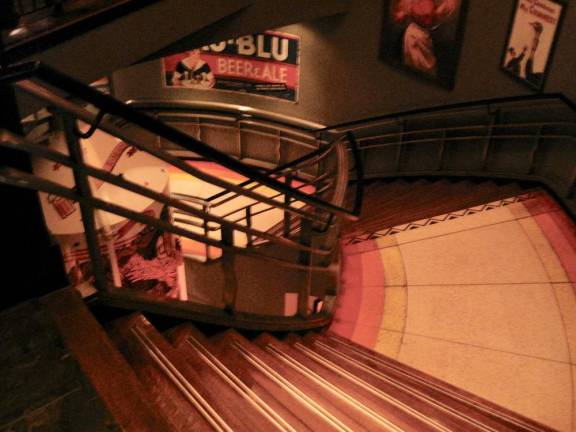
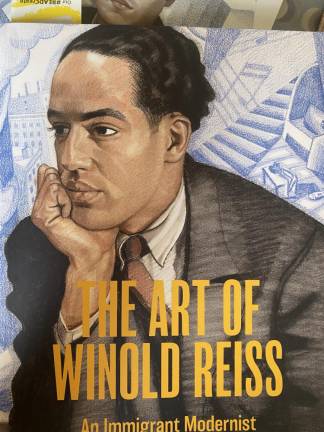
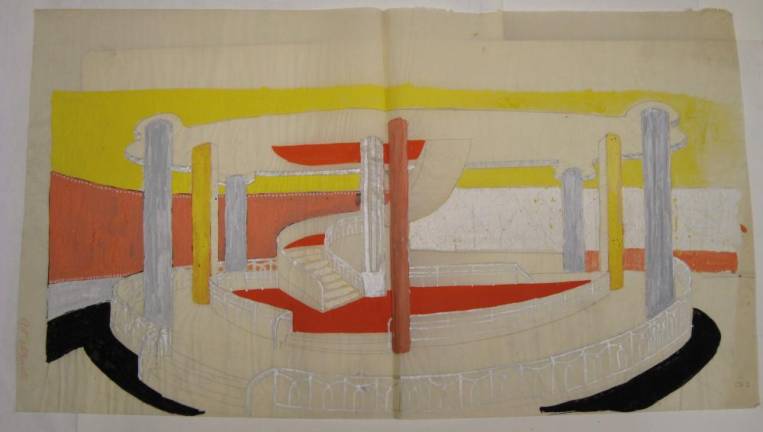

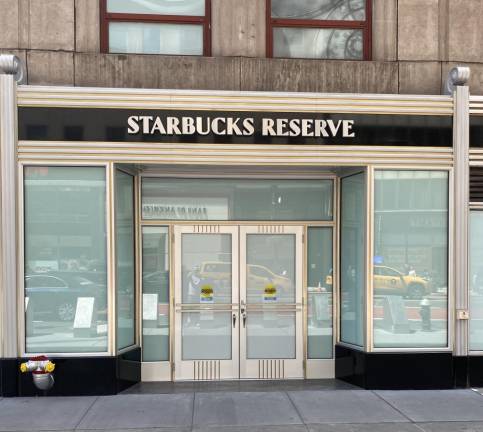
Of the many glorious Manhattan restaurants he designed, all that survived to our age was that one stairway, descending graciously from the ground floor of the Empire State Building, where Longchamps used to be.
Now, in one of those ironies of the Great City – or perhaps tragedy is more apt? – the fate of that stairway is being kept secret by the Empire State Building and its new tenant, Starbucks, just as the curators at the New-York Historical Society are reviving the memory of its creator.
That stairway, and so many other legendary New York spaces, was by Winold Reiss, who arrived here from Germany in 1913 and went on to become an artist, graphic designer and one of New York City’s premier architects of restaurants and other commercial spaces.
“From the late 1930s to the early 1950s at least one hundred thousand New Yorkers a day dined, drank, shopped, or were entertained in an interior designed or embellished by Winold Reiss,” wrote the architectural historian, C. Ford Peatross, founding director of the Center for Architecture, Design and Engineering at the Library of Congress.
His professional colleagues, the giants of New York architecture, all knew Reiss, Peatross said, but unlike them he never spent time or money on publicity. He spent a lot of his time on his riveting portrait work, but the paintings got less attention than they might have because the best of them were of African Americans in Harlem and Native Americans in the Dakotas.
“It takes a lot of time for an artist to push themselves, he wanted to do his art,” said Marilyn Satin Kushner of the New-York Historical Society. “And he was also making money in the restaurants. he didn’t have to push his art because he was getting paid. He just wasn’t getting paid by the art people and his art wasn’t selling.”
The Face of New York
Reiss is a classic New York story of an immigrant who made good, and changed the face of New York. But he belongs, Kushner says, in the canon of American art to which he was never quite inducted.
To help make that happen, Kushner has spent seven years curating the NYHS’s new exhibition, “The Art of Winold Reiss. An Immigrant Modernist.” The exhibition is breathtaking for the range of Reiss’ talents.
He created posters, book covers, an exceptional set of portraits of African Americans in Harlem and dozens of commercial and residential interiors. The last time his Harlem collection was displayed together was when they were new, in 1925, at what is now the Schomburg Center on 135th street. Those paintings are just one part of his work that disappeared from view.
For New Yorkers of a certain age the restaurants he created are a memory loop to a different New York: Dunhall, Lindy’s, Restaurant Crillon and Rumpelmayers Café and Tea Room in the St. Moritz, where one young New Yorker particularly favored the Peach Melba.
Reiss worked regularly for the Longchamps chain, designing nearly a dozen of their restaurants. The stairway in the Empire State Building was part of the Longchamps that opened in 1938.
Kushner said that when Reiss arrived in New York, brimming with the colors and modern designs of European art, he found New York’s restaurants “dark like the gravy that comes on the meat.”
New Dining Experience
So Reiss created a new kind of dining experience. Spaces filled with light, metal, colors, fabrics and art. “He gave them the flashy for the 30s and the 40s,” said Kushner, “What he did was revolutionary.”
But by the 1960s it wasn’t so revolutionary anymore, Kushner said. New York, as New Yorkers have been saying since at least 1928, will be a great place if we ever get it finished. (No, Mayor Bloomberg, O. Henry didn’t coin the phrase, although he did repeat it.) We are always remaking things. Which is the fate that befell the interior design work of Winold Reiss.
“New York is always modernizing,” Kushner observed. “A lot of the people were demolishing the interiors. To upgrade them. To make it modern. Because New York does that all the time. Right? Too often.”
It was, in its way, akin to the demolition of Pennsylvania Station, except the loss of the train station was sudden, and mobilized New Yorkers to create a system to preserve Landmarks.
“This was before landmarks came into being. They didn’t care about it ... It just sort of disappeared and nobody noticed it.”
That stairway in the Empire state building survived a number of renovations. At one point Longchamps itself converted the restaurant to a Mississippi River theme, with a steamboat hung above the stairway.
In 1981 the Landmarks Preservation Commission declared the lobby of the Empire State Building a protected landmark, but not the adjacent commercial space. “I suspect that if we’d seen that staircase we would have considered it,” said the author of the LPC’s review of the lobby 41 years ago, Anthony Robins, who by coincidence had just been to see the New-York Historical Society exhibition.
“Reiss is amazing,” Robins said.
Last Surviving Example
The stairway nonetheless survived through the shutdown of the Longchamps chain (its owner was convicted of tax fraud) and a cycle of other tenants, most recently a Heartland Brewery.
Peatross said he believed the stairway and related elements to be the last surviving example of Reiss’ restaurant design work. Rumpelmayers, for example, was destroyed when Donald Trump gutted the interior of the St. Moritz in 1999 and redubbed it the Ritz-Carlton New York, Central Park.
In 2009, Peatross visited and photographed the stairway inside Heartland Brewery. He said he tried to phone and email the skyscraper’s leasing agent to say that Reiss’ original plans were all preserved in the archive, hoping they would be interested in a restoration. No one responded, he said, and the Heartland Brewery closed.
“Reiss was responsible for the creation and organization of the space and its principal elements, including the staircase, railings, color scheme, wall treatments, lighting, mirrors, etc.,” Peatross said. “His associates, the office of Ely Jacques Kahn, one of the city’s best, relied on him almost completely for these things.”
Then in 2020, the owners of the Empire State Building signed a lease with Starbucks for a destination-style Starbucks Reserve Restaurant. The announcement said Starbucks would use both the lobby and lower level. But there was no mention of the Reiss’ stairway and Starbucks told The Real Deal it had nothing to share about the design work “at this time.”
For the past ten days a reporter has been asking the Empire State Building and then Starbucks for the status of the stairway. Starbucks at first referred the reporter to the Empire State Building which then said: “We do not speak on behalf of tenants and their spaces.”
“Now, I am genuinely confused,” the reporter wrote back. “There is, or was, an historic Reiss stairway in the space now being renovated for a Starbucks. This renovation has either preserved or destroyed the stairway. Which is it? Starbucks told me to ask you. Now you say you can’t comment for Starbucks?”
The spokesperson, Brock Talbot, wrote back immediately with one word: “Correct.”
The mystery of why the two companies are being so secretive was deepened when the Buildings Department reported that the stairway was not within “the scope of work” of the permit granted to build the Starbucks.
This appeared to mean that either that Starbucks was violating the construction permit or it simply couldn’t let questions prompted by a mere museum exhibition interfere with its timeline for rolling out its snazzy new location in what had been a snazzy old location.
The Starbucks Reserve will open later this year, the spokesman said, “but we have no additional details to share at this time.”
“The Art of Winold Reiss. An Immigrant Modernist” is on view at the New-York Historical Society through October 9, 2022.